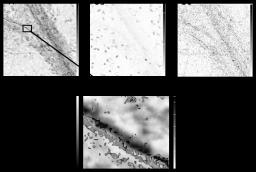Coll. JL. Morel*
*Laboratoire Sols et Environnement, ENSAIA-INRA/INPL, 2 avenue de la Forêt de Haye, F-54505 Vandoeuvre-les-Nancy, France
Cobalt is not classified as an essential element for plants, however, it is usually described as “beneficial”. This trace element can be a contaminant in soils due to agricultural additives or metal refineries. Certain plants species have the ability to extract metals (such as Co) from soils, thus, cleaning the environment. Therefore, knowledge of the physiological mechanisms of metal absorption is required to improve these phytoremediation technologies.
Patterns of cobalt accumulation and storage were determined in tomato (Lycopersicon esculentum) and wheat (Triticum aestivum) species, two types of higher plants which grow in very different ways and that differ in their strategies to absorb Fe. Plants were grown in nutrient solutions, with different Co treatments, using controlled environmental conditions. The spatial distributions of K, Ca, Fe and Co in whole plants, and in leaf and stem sections, were examined by micro-PIXE. In conjunction, total Co concentrations were determined by ICP-MS.
In wheat leaves (monocotyledon), Co was distributed in exactly the same pattern as K and Ca, following the parallel veins network. In contrast, in tomato leaves (dicotyledon), elemental maps showed that Co is not distributed in the same fashion as K, Ca and Fe. This may possibly be a result of a detoxification mechanism, through which Co is sequestered from other elements, but needs to be confirmed.
Further nuclear microprobe analyses will be performed with plants grown on polluted or natural soils and, above all, with a Co-hyperaccumulating species, in order to determine the useful conditions and plants necessary for phytoremediation purposes.



 Physics and chemistry for life sciences and the environment › Human and Environmental Toxicology
Physics and chemistry for life sciences and the environment › Human and Environmental Toxicology 